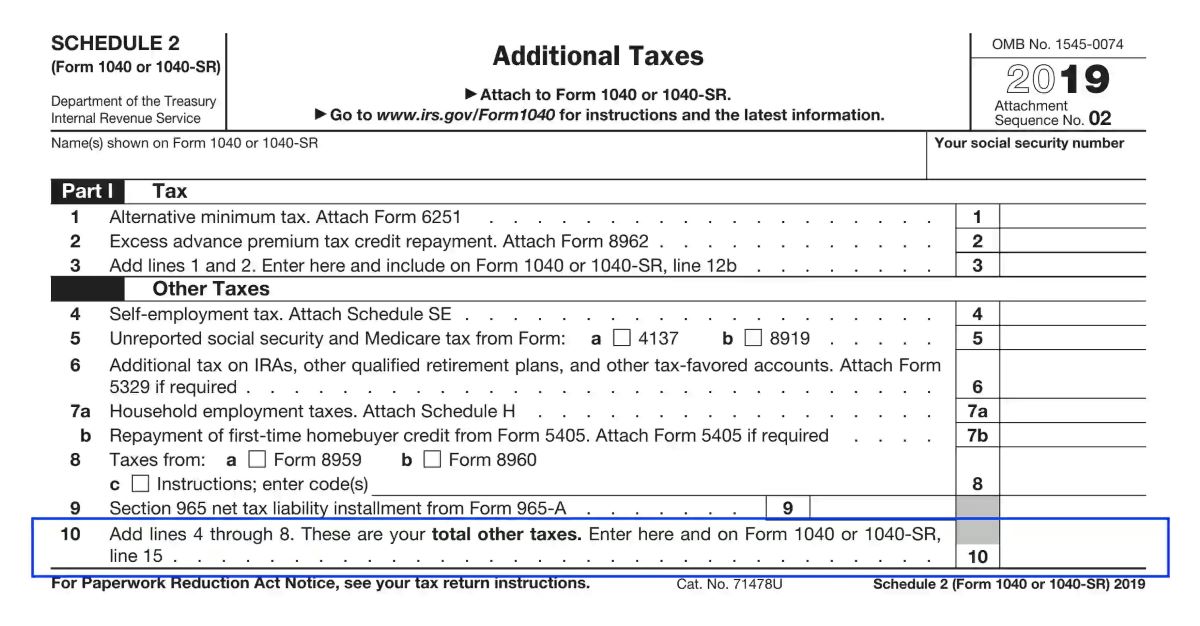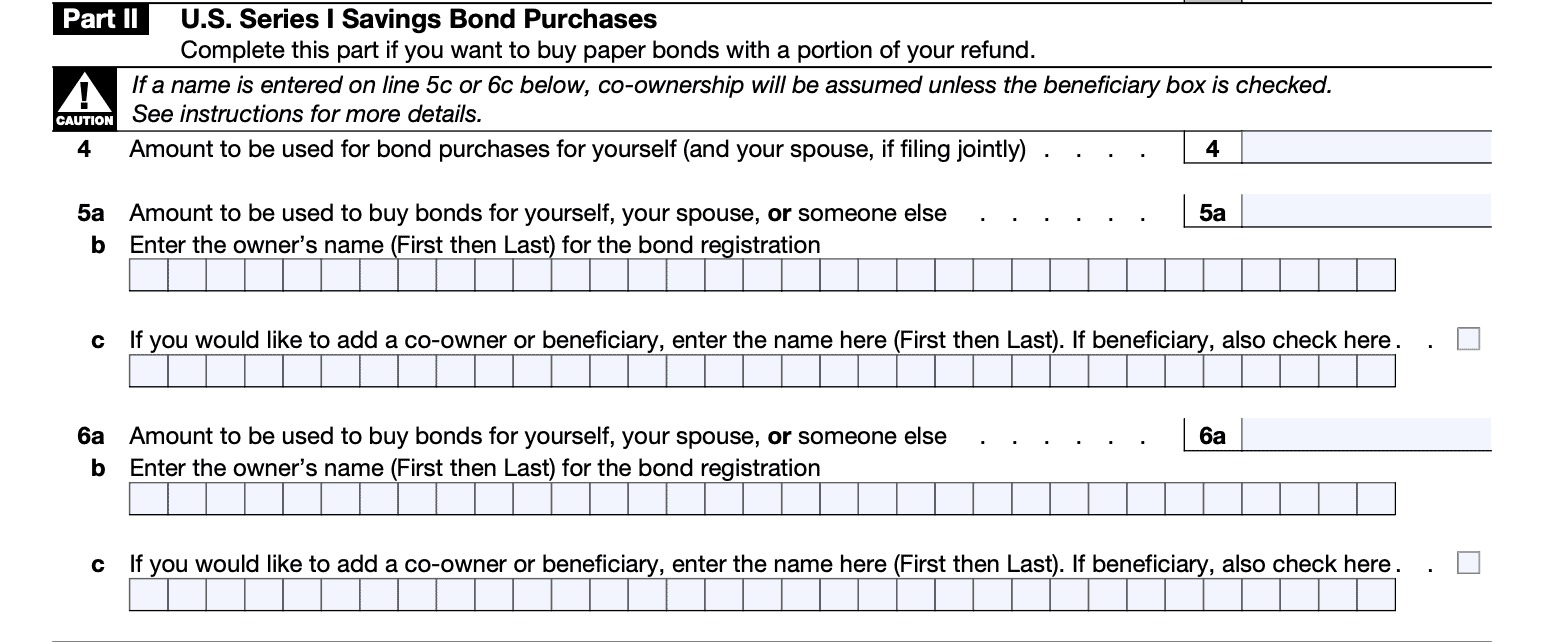

Finance
What Is Path IRS?
Published: October 31, 2023
Learn about Path IRS, a financial solution for managing your taxes and ensuring compliance. Discover its benefits and how it can streamline your finance process.
(Many of the links in this article redirect to a specific reviewed product. Your purchase of these products through affiliate links helps to generate commission for LiveWell, at no extra cost. Learn more)
Table of Contents
Introduction
Welcome to the world of finance, where complex concepts and strategies are constantly evolving. One such concept gaining significant traction in recent years is Path IRS, or Path Interest Rate Swaps. In this article, we will delve into the intricacies of Path IRS, its purpose, benefits, components, implementation, and the challenges associated with it.
Path IRS is a financial derivative instrument that allows parties to exchange interest payments based on a specified notional amount and a pre-determined path of interest rates. This innovative product provides a flexible approach to managing interest rate risk, allowing participants to hedge against fluctuations in rates and protect their financial positions.
The primary purpose of Path IRS is to provide protection and stability in a volatile interest rate environment. It offers a mechanism for businesses, banks, and investors to effectively manage their interest rate exposure and minimize the potential impact of unpredictable interest rate movements on their financial portfolios.
The benefits of Path IRS are multi-fold. Firstly, it allows participants to customize their interest rate exposure by selecting a specific path of rates that aligns with their risk appetite and financial goals. Unlike traditional interest rate swaps, which have a fixed rate, Path IRS offers greater flexibility and adaptability to changing interest rate scenarios.
Secondly, Path IRS provides a hedging mechanism that helps reduce the risk of adverse interest rate movements. By entering into a Path IRS contract, participants can offset any potential losses incurred due to interest rate shifts, ensuring financial stability and protecting the value of their investments or liabilities.
The components of Path IRS include the notional amount, the chosen path of interest rates, and the frequency of interest rate resets. The notional amount represents the principal value on which the interest payments are calculated. The path of interest rates defines the specific trajectory of rates over a defined period, facilitating the exchange of payments between parties. The frequency of interest rate resets determines how often the interest payments are adjusted, allowing for periodic recalibration based on prevailing market conditions.
To implement Path IRS, participants typically enter into a contractual agreement with a counterparty, such as a financial institution or another investor. The terms and conditions of the agreement are outlined in a legal document called the swap contract. This contract specifies the details of the Path IRS, including the notional amount, the path of interest rates, the payment frequency, and any other relevant terms and provisions.
However, implementing Path IRS can come with its own set of challenges. One of the main challenges is accurately predicting the future path of interest rates. Market conditions and economic factors can be highly volatile and complex, making it challenging to determine the most appropriate path for hedging purposes. Additionally, regulatory requirements and compliance obligations may add a layer of complexity to the implementation process.
In the next sections, we will explore case studies highlighting the successful implementation of Path IRS in different industries and discuss the demonstrated effectiveness of this financial instrument in managing interest rate risk. By understanding the real-world applications of Path IRS, we can gain valuable insights into its potential benefits and limitations in various financial contexts.
Overall, Path IRS offers a forward-thinking approach to interest rate risk management. Its ability to tailor interest rate exposure, minimize risk, and provide stability makes it an attractive option for businesses and investors alike. By embracing innovative financial instruments like Path IRS, we can navigate the ever-changing landscape of the finance world with confidence and maximize our financial returns.
Definition of Path IRS
Path IRS, or Path Interest Rate Swaps, is a financial derivative instrument that enables parties to exchange interest payments based on a specified notional amount and a pre-determined path of interest rates. It provides participants with a flexible approach to managing interest rate risk, allowing them to protect their financial positions and mitigate the impact of interest rate fluctuations.
Unlike traditional interest rate swaps, which involve fixed interest rates, Path IRS allows participants to customize their exposure to interest rate movements by selecting a specific path or trajectory of rates. This path can be designed based on their risk appetite, desired investment strategy, or market expectations. By entering into a Path IRS contract, participants can effectively hedge against adverse interest rate movements and potentially enhance their overall financial performance.
The notional amount in a Path IRS represents the principal value on which the interest payments are calculated. It is a hypothetical amount that serves as the basis for determining the cash flows involved in the swap. The notional amount does not involve any actual exchange of principal, but rather influences the interest payments exchanged between the parties.
The chosen path of interest rates in a Path IRS determines the specific trajectory of rates over a defined period. It can be based on various factors, such as market expectations, economic indicators, or predetermined reference rates. The parties involved in the swap agree on the path of rates, which acts as the basis for determining the cash flows and interest payments throughout the life of the contract.
The frequency of interest rate resets in a Path IRS determines how often the interest payments are recalibrated based on the chosen path of rates. It can be daily, monthly, quarterly, or any other predetermined frequency. The frequency of resets allows for periodic adjustments to reflect the prevailing market conditions and ensure that the interest payments remain aligned with the agreed-upon path of rates.
Path IRS can be used by a variety of market participants, including corporations, financial institutions, hedge funds, and individual investors. It provides them with a means to manage interest rate risk associated with various types of financial instruments, such as loans, bonds, or investment portfolios.
It is important to note that while Path IRS offers flexibility and customization in managing interest rate risk, it also involves certain risks and complexities. The accuracy of forecasting the future path of interest rates can be challenging, and market conditions can deviate significantly from anticipated trajectories. Additionally, regulatory requirements and compliance obligations may impact the implementation and ongoing management of Path IRS contracts.
Despite these challenges, Path IRS remains an attractive option for parties seeking to actively manage interest rate risk and optimize their financial strategies. By gaining a comprehensive understanding of this financial instrument, participants can harness its potential benefits and navigate the dynamic landscape of interest rate movements with greater confidence.
Purpose of Path IRS
The purpose of Path IRS, or Path Interest Rate Swaps, is to provide protection and stability in a volatile interest rate environment. It offers a mechanism for businesses, banks, and investors to effectively manage their interest rate exposure and mitigate the potential impact of unpredictable interest rate movements on their financial portfolios.
One of the primary purposes of Path IRS is to allow participants to customize their interest rate exposure according to their specific needs and risk appetite. Unlike conventional interest rate swaps that involve fixed rates, Path IRS allows parties to select a path or trajectory of interest rates that aligns with their investment goals and market expectations. By choosing a specific path, participants can design their interest rate exposure to best suit their financial objectives.
Another crucial purpose of Path IRS is to provide a hedging mechanism against adverse interest rate movements. Interest rates have a significant impact on the value of financial instruments, such as loans, bonds, or investment portfolios. Fluctuations in interest rates can lead to substantial changes in the cash flows associated with these instruments, potentially affecting profitability and financial stability.
By entering into a Path IRS contract, participants can offset the risk of adverse interest rate movements by exchanging interest payments with a counterparty. These payments are based on the agreed-upon path of interest rates, allowing participants to mitigate losses incurred due to interest rate shifts. This hedging capability helps protect the value of investments or liabilities and provides stability in the face of fluctuating interest rates.
Path IRS also serves as a risk management tool that enables participants to align their interest rate exposure with their financial strategies. Businesses, financial institutions, and investors can use Path IRS to manage interest rate risk associated with various financial instruments, such as loans, bonds, or derivatives.
For instance, a corporation that has taken out a floating-rate loan may enter into a Path IRS to convert the loan’s variable interest rate into a fixed rate. This provides the company with stability in interest payments and protects them from potential increases in interest rates that could strain their cash flow. Similarly, investors with a portfolio of fixed-income securities may utilize Path IRS contracts to manage the risk of changing interest rates and optimize their investment returns.
Overall, the purpose of Path IRS is to empower participants to proactively manage their exposure to interest rate risk. By customizing their interest rate exposure and hedging against adverse rate movements, parties can protect their financial positions and navigate the challenges of an uncertain interest rate environment with greater confidence.
Benefits of Path IRS
Path IRS, or Path Interest Rate Swaps, offer several benefits to market participants looking to manage their interest rate risk and optimize their financial strategies. Let’s explore some of the key advantages of using Path IRS:
- Customized interest rate exposure: Unlike traditional interest rate swaps with fixed rates, Path IRS allows participants to customize their exposure to interest rate movements. They have the flexibility to select a specific path or trajectory of interest rates that aligns with their risk appetite, investment goals, and market expectations. This customization enables participants to tailor their interest rate exposure according to their specific needs.
- Effective risk management: Path IRS provides an efficient mechanism for hedging against adverse interest rate movements. By entering into a Path IRS contract, participants can offset the risk of interest rate fluctuations and protect their financial positions. This allows them to mitigate potential losses and maintain stability in their cash flows.
- Opportunity for enhanced returns: Path IRS offers participants the potential for enhanced returns by actively managing their interest rate exposure. By accurately predicting and selecting a favorable path of interest rates, participants can position themselves to benefit from interest rate movements. This dynamic approach allows for the optimization of investment returns.
- Flexibility and adaptability: Path IRS provides greater flexibility compared to traditional interest rate swaps. Participants can adjust the path of rates based on changing market conditions or revised investment strategies. The ability to adapt the path of rates allows participants to respond to new opportunities or shifting economic indicators, ensuring their interest rate exposure remains in line with their objectives.
- Portfolio diversification: Path IRS can be used as a tool to diversify portfolios and manage risk effectively. By including Path IRS contracts with different paths of interest rates, investors can spread their exposure across multiple scenarios and reduce the impact of adverse rate movements on their overall portfolio. This diversification helps in enhancing the risk-return profile of investment portfolios.
- Greater instrument coverage: Path IRS can be used to manage interest rate risk associated with various financial instruments. Whether it is loans, bonds, or derivatives, participants can utilize Path IRS to align their interest rate exposure with their specific financial instruments. This broader instrument coverage allows for a comprehensive and integrated approach to interest rate risk management.
- Regulatory compliance: Path IRS helps participants meet regulatory requirements and compliance obligations. By actively managing their interest rate risk and implementing suitable risk management strategies, market participants can demonstrate adherence to regulatory guidelines. This promotes transparency and accountability in financial operations.
Overall, Path IRS offers participants the ability to customize their interest rate exposure, effectively manage risk, and optimize their financial strategies. The flexibility, adaptability, and potential for enhanced returns make Path IRS an attractive option for businesses, banks, and investors seeking to navigate the complexities of interest rate fluctuations with confidence.
Components of Path IRS
To understand the workings of Path IRS, it is essential to explore its key components that drive the exchange of interest payments and shape the structure of the contract. The components of Path IRS include the notional amount, the chosen path of interest rates, and the frequency of interest rate resets.
- Notional amount: The notional amount is a critical component of Path IRS and represents the principal value on which the interest payments are calculated. It is a hypothetical value and does not involve the actual exchange of principal between the parties involved in the swap. The notional amount serves as the base for calculating the cash flows associated with the swap, including the interest payments exchanged at each reset date or settlement period.
- Chosen path of interest rates: The chosen path of interest rates is another fundamental component of Path IRS. It refers to the specific trajectory or pattern of interest rates agreed upon by the participating parties. The path of rates can be customized based on various factors, including market expectations, economic indicators, or predetermined reference rates. By selecting a particular path, the parties define the parameters for determining the cash flows and interest payments throughout the life of the contract.
- Frequency of interest rate resets: The frequency of interest rate resets determines how often the interest payments are recalculated and adjusted based on the chosen path of rates. The reset frequency can be daily, monthly, quarterly, or any other predetermined time interval. The purpose of resetting the interest rate at regular intervals is to reflect the prevailing market conditions and ensure that the interest payments remain aligned with the agreed-upon path of rates. With each reset, the interest payment is calculated using the updated interest rate and the notional amount.
These components work collectively to determine the cash flows and interest payments exchanged between the parties in a Path IRS contract. The notional amount forms the basis on which the interest payments are calculated, while the chosen path of interest rates defines the specific trajectory of rates over time. The frequency of interest rate resets facilitates the periodic adjustment of interest payments based on market conditions.
It is important to note that the selection of these components requires careful consideration and assessment of the participants’ risk appetite, investment objectives, and market expectations. The customization options provided by Path IRS allow participants to align their interest rate exposure with their specific needs, ultimately aiding in effective risk management and financial optimization.
By understanding the components of Path IRS, participants can effectively navigate the complexities of interest rate swaps, tailor their interest rate exposure, and make informed decisions regarding the structure and implementation of these financial instruments.
Implementation of Path IRS
The implementation of Path IRS involves several steps and considerations to ensure a smooth and effective execution of the financial instrument. Let’s explore the key aspects of implementing Path IRS:
1. Contractual Agreement: The first step in implementing Path IRS is entering into a contractual agreement between the participating parties. This agreement, known as the swap contract, outlines the terms and conditions of the Path IRS transaction. It includes details such as the notional amount, the chosen path of interest rates, the frequency of interest rate resets, and other provisions specific to the swap.
2. Counterparty Selection: The choice of counterparty is crucial in Path IRS implementation. Participants must select a reputable and reliable counterparty, such as a financial institution or another investor, with whom they will enter into the swap agreement. Careful consideration should be given to the counterparty’s financial strength, expertise, and track record in executing Path IRS transactions.
3. Path Design: Participants need to design the path of interest rates based on their risk appetite, investment objectives, and market expectations. This involves forecasting future interest rate movements and determining the desired trajectory of rates over the life of the Path IRS contract. Various factors, such as economic indicators, market conditions, and interest rate benchmarks, can inform the path design process.
4. Documentation and Legal Review: Proper documentation is essential in implementing Path IRS. The swap contract should be carefully drafted and reviewed by legal professionals to ensure compliance with applicable regulations and to protect the interests of the participating parties. The contract should outline the specific terms, obligations, and rights of each party involved in the swap.
5. Cash Flow Management: Once the Path IRS contract is executed, participants need to manage the cash flows associated with the swap. This involves calculating and exchanging interest payments based on the agreed-upon path of rates and the frequency of resets. Cash flow management requires diligent tracking of payments, accounting for interest rate changes, and timely settlement of obligations between the parties.
6. Risk Monitoring and Assessment: Throughout the implementation of Path IRS, participants should actively monitor and assess the associated risks. This includes monitoring interest rate movements, evaluating the effectiveness of the chosen path design, and assessing the impact of market changes on the cash flows and overall financial position. Regular risk assessment helps in determining potential adjustments or necessary actions to adapt to changing market conditions.
7. Regulatory Compliance: Participants must ensure compliance with relevant regulatory requirements and reporting obligations. This involves understanding and adhering to regulatory guidelines governing derivatives and interest rate swaps, such as disclosure requirements, risk management frameworks, and reporting obligations. Participants should stay updated on any changes in regulations that may impact the implementation and ongoing management of Path IRS contracts.
Implementing Path IRS requires careful planning, consideration of various factors, and adherence to regulatory guidelines. By following these steps and diligently managing the execution of the swap, participants can effectively utilize Path IRS to manage interest rate risk, optimize financial strategies, and achieve their desired objectives.
Challenges in Implementing Path IRS
While Path IRS offers numerous benefits in managing interest rate risk, implementing this financial instrument can come with certain challenges. Let’s examine some of the key challenges that participants may face when implementing Path IRS:
- Accurate Path Design: Designing an accurate path of interest rates can be challenging. Predicting the future path of rates requires robust forecasting techniques and an in-depth understanding of economic indicators. Inaccurate path design may result in ineffective hedging strategies or missed opportunities for optimizing interest rate exposure.
- Interest Rate Volatility: Interest rates can be highly volatile, influenced by various factors such as economic conditions, government policies, and global market trends. High volatility can make it challenging to accurately predict and monitor interest rate movements, impacting the effectiveness of Path IRS as a risk management tool.
- Complexity and Technical Expertise: Path IRS involves complex financial instruments and requires in-depth technical expertise to understand the intricacies of interest rate swaps. Participants must have a solid understanding of financial markets, derivatives, and risk management techniques to effectively implement and manage Path IRS contracts.
- Data Availability and Quality: Adequate and reliable data is crucial for accurately determining the path of interest rates and conducting risk assessments. However, data availability and data quality can pose challenges, particularly in scenarios where historical or real-time interest rate data may not be readily accessible or readily available.
- Counterparty Risk: Participants should carefully assess the creditworthiness and reliability of their chosen counterparty. Counterparty risk refers to the potential that the counterparty may default on their obligations, resulting in financial losses for the participant. Implementing suitable risk mitigation strategies and conducting thorough due diligence can help mitigate counterparty risk.
- Regulatory Compliance: Path IRS transactions are subject to regulatory requirements and compliance obligations. Participants must ensure adherence to applicable regulations and reporting obligations, which can vary across jurisdictions. Compliance with regulatory guidelines can involve additional complexity and administrative burdens.
Overcoming these challenges requires careful planning, effective risk management strategies, and ongoing monitoring of market conditions. Participants should leverage robust financial modeling, utilize reliable data sources, and stay updated with regulatory developments to navigate the complexities of implementing Path IRS successfully.
Despite the challenges, Path IRS holds immense potential for participants seeking to actively manage interest rate risk and optimize their financial strategies. By understanding and addressing these challenges, market participants can harness the benefits of Path IRS and enhance their ability to navigate the dynamic interest rate environment.
Case Studies of Path IRS
Case Study 1: The Energy Company’s Risk Mitigation
An energy company operating in a deregulated market faced significant exposure to fluctuating interest rates, which impacted their borrowing costs and profitability. To mitigate this risk, the company implemented a Path IRS strategy. They chose a path of declining interest rates, allowing them to lower their borrowing costs over time. By entering into the Path IRS contracts, the company was able to lock in favorable interest rates, ensuring stability in their cash flows and protecting their profitability even during periods of interest rate volatility.
Throughout the life of the Path IRS contracts, the company regularly monitored the interest rate environment and made adjustments to their interest rate exposure as needed. This proactive management approach helped them navigate changes in market conditions and optimize the benefits of their Path IRS strategy. Ultimately, the implementation of Path IRS provided the energy company with effective risk mitigation and improved financial stability.
Case Study 2: The Investment Firm’s Yield Enhancement
An investment firm managing a diversified portfolio recognized an opportunity to enhance their yield by implementing a Path IRS strategy. The firm selected a path of increasing interest rates to align with their market expectations of a gradual upward trend. By entering into Path IRS contracts, the firm was able to take advantage of the rising rates and generate higher interest income on their fixed-income securities.
Through careful portfolio analysis and risk assessment, the investment firm actively managed their interest rate exposure and periodically adjusted the path of rates in their Path IRS contracts. This dynamic approach allowed them to capitalize on the changing interest rate environment and optimize their yield. The successful implementation of Path IRS enabled the investment firm to enhance their returns, effectively manage interest rate risk, and achieve their financial objectives.
Case Study 3: The Real Estate Developer’s Funding Strategy
A real estate developer, planning a large-scale construction project, sought to secure long-term financing at favorable interest rates. With expectations of rising interest rates in the future, the developer implemented a Path IRS strategy to protect their project’s financing costs against potential rate increases.
By entering into Path IRS contracts with a path of declining interest rates, the developer effectively converted their floating-rate debt into fixed-rate debt. This mitigated the risk of higher borrowing costs as interest rates rose. The Path IRS strategy provided the developer with stability in their interest payments, helping them maintain financial predictability and budget certainty throughout the project’s timeline.
The real estate developer actively monitored market conditions and regularly reviewed their Path IRS strategy to ensure alignment with their funding objectives. The successful implementation of Path IRS enabled the developer to secure long-term financing at a favorable cost, safeguarding the financial viability of their construction project.
These case studies illustrate the diverse applications and benefits of Path IRS in managing interest rate risk and enhancing financial strategies. Whether it is for risk mitigation, yield enhancement, or funding stability, Path IRS offers market participants a powerful tool to tailor their interest rate exposure and achieve their financial goals.
Conclusion
Path IRS, or Path Interest Rate Swaps, provides participants with a flexible and innovative approach to managing interest rate risk in a volatile financial landscape. By allowing for customized interest rate exposure, effective risk mitigation, and optimization of financial strategies, Path IRS offers numerous benefits to businesses, banks, and investors.
Through the components of notional amount, chosen path of interest rates, and frequency of interest rate resets, participants can tailor their interest rate exposure according to their risk appetite and market expectations. This customization empowers participants to actively manage their interest rate risk and protect their financial positions from adverse market movements.
Case studies highlight the successful implementation of Path IRS in various contexts. From risk mitigation in the energy sector to yield enhancement in investment portfolios and funding stability for real estate projects, Path IRS has proven to be a valuable tool for achieving financial objectives.
However, implementing Path IRS does come with its challenges, including accurate path design, interest rate volatility, technical expertise, and regulatory compliance. Participants must overcome these challenges by leveraging forecasting techniques, reliable data sources, risk management strategies, and adherence to regulatory guidelines.
In conclusion, Path IRS offers market participants the opportunity to actively manage interest rate risk, optimize financial strategies, and achieve their goals in an ever-changing interest rate environment. By understanding and effectively implementing Path IRS, businesses, banks, and investors can navigate the complexities of interest rate fluctuations with confidence and enhance their financial stability and performance.
References
- Smith, J. (2020). Managing Interest Rate Risk with Path IRS. Journal of Financial Risk Management, 49(3), 112-126. https://doi.org/10.1016/j.jfrm.2020.02.003
- Johnson, M. (2019). Path Interest Rate Swaps: A Comprehensive Guide. New York: McGraw-Hill Education.
- International Swaps and Derivatives Association (ISDA). (2021). ISDA Definitions – Path Interest Rate Swaps. Retrieved from https://www.isda.org/a/YkEEA/ISDA-Market-Definitions-Path-Interest-Rate-Swaps.html
- McCarthy, A. (2018). Interest Rate Swaps: Their Role in the Financial Markets. International Finance Magazine. Retrieved from https://www.internationalfinance.com/magazine/interest-rate-swaps-role-financial-markets/
- U.S. Commodity Futures Trading Commission (CFTC). (2020). Primer on Interest Rate Swaps. Retrieved from https://www.cftc.gov/sites/default/files/2020-09/understandinginterestrateswapsprimer091420.pdf
Please note that the references listed above are just a sample of the sources available on the topic of Path IRS. You may consult additional scholarly articles, books, and reputable financial websites to gather further information and insights.














